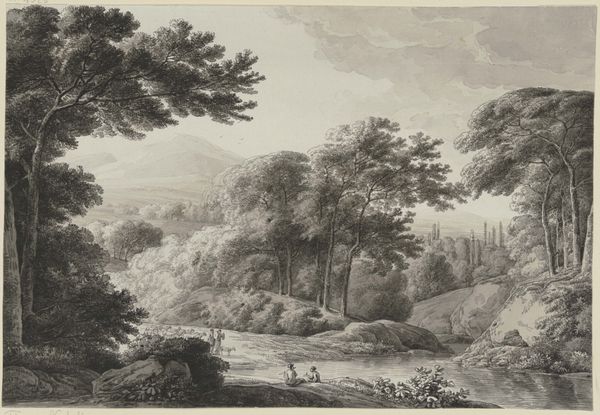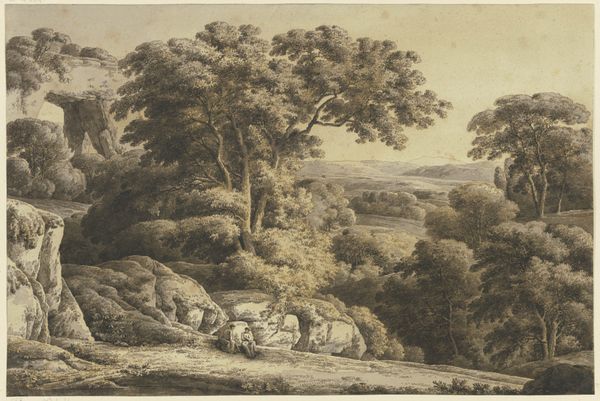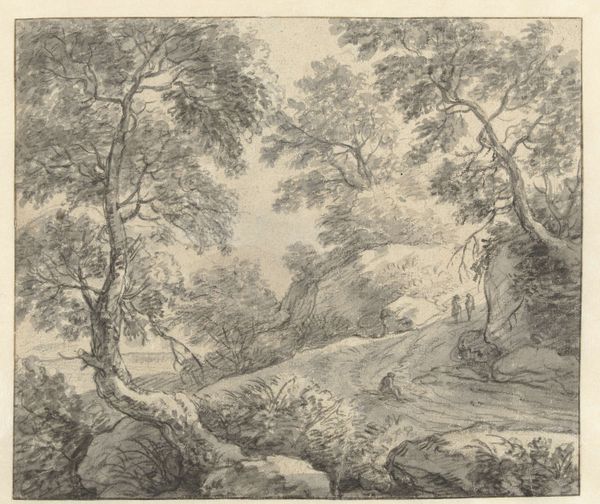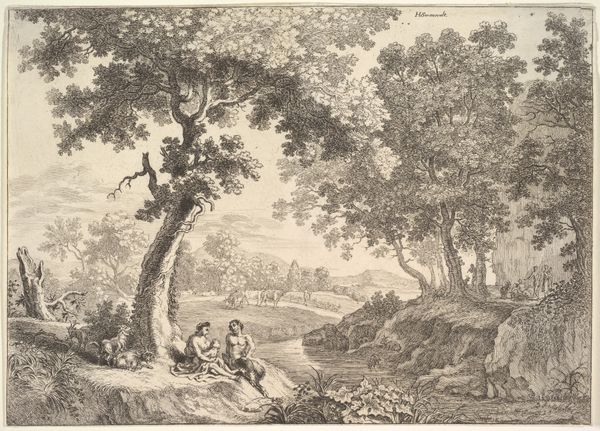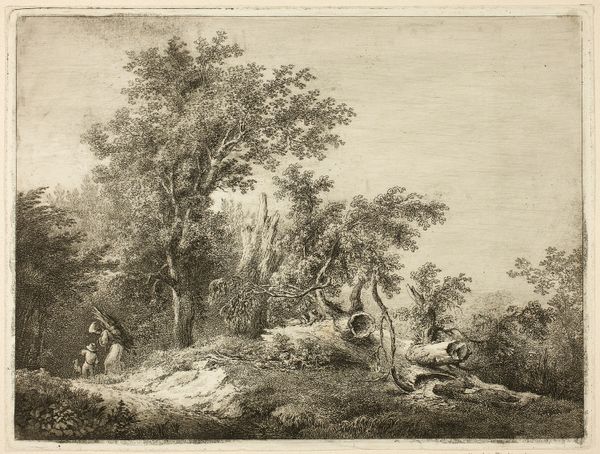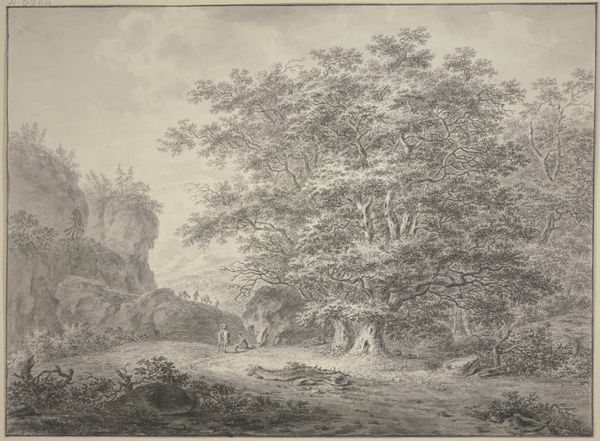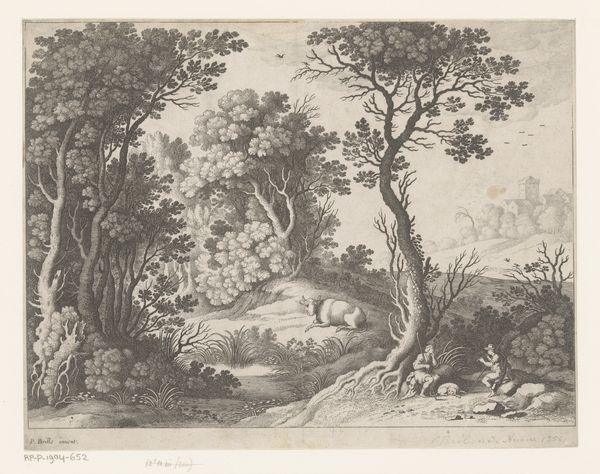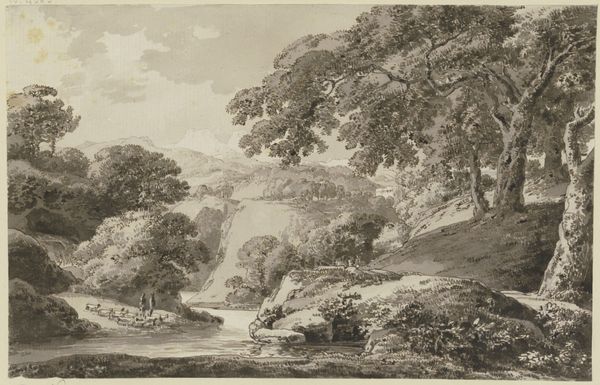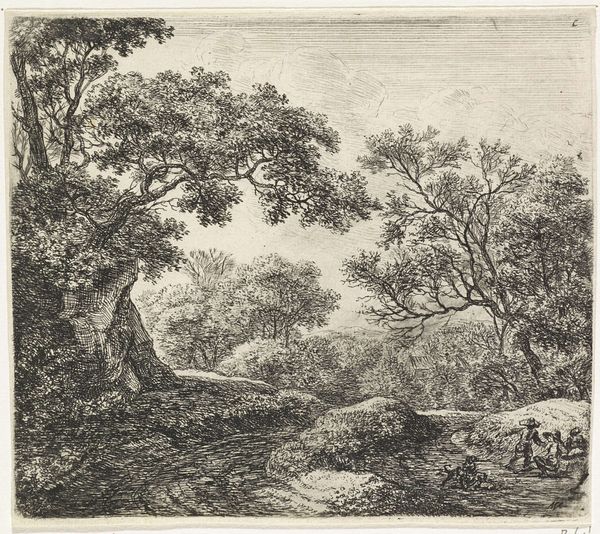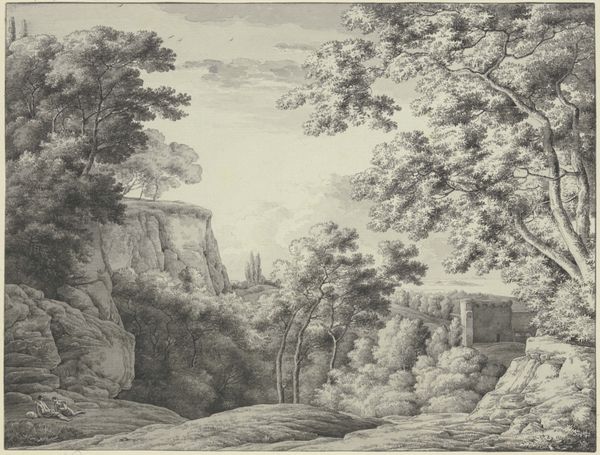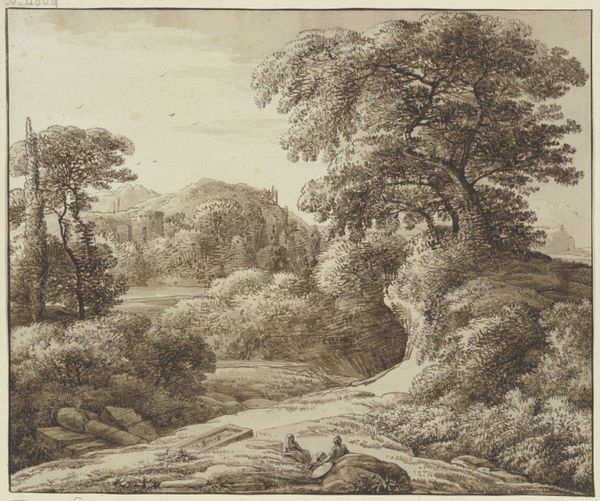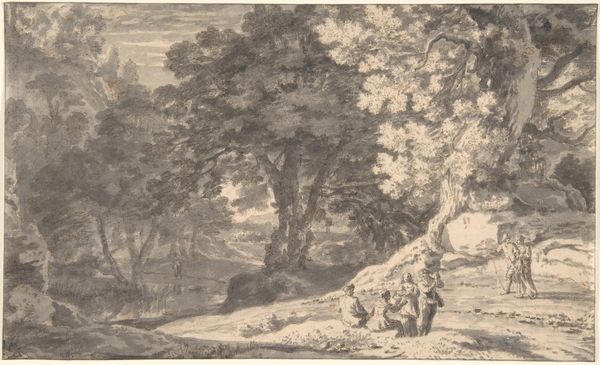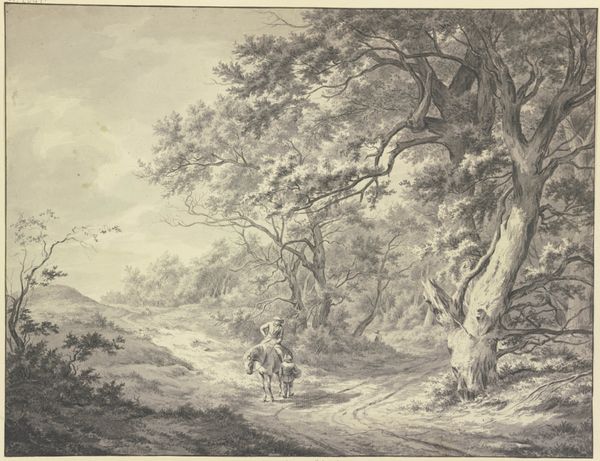
Landscape with a Young Girl at a Waterfall 1780 - 1847
0:00
0:00
drawing, print, plein-air, watercolor, pencil
#
drawing
# print
#
plein-air
#
pencil sketch
#
landscape
#
waterfall
#
figuration
#
watercolor
#
romanticism
#
pencil
#
watercolor
Dimensions: sheet: 8 11/16 x 11 7/16 in. (22.1 x 29 cm)
Copyright: Public Domain
Editor: This is "Landscape with a Young Girl at a Waterfall," created sometime between 1780 and 1847 by Wolfgang Adam Töpffer, using watercolor and pencil. It evokes a sense of quiet solitude, a girl absorbed in the immensity of nature. How do you interpret this work within its historical context? Curator: That solitude is key, isn't it? Think about the Romantic era and its focus on the individual’s emotional experience within nature, a space often coded as feminine. Where do you see this piece fitting into the patriarchal construction of that era? Editor: I see it in the contrast. The landscape is powerful, almost overwhelming, yet the girl seems small, almost placed there for scale or as a token, against this force. Curator: Precisely! It's as if the girl is a cipher through which the viewer experiences the sublime, isn’t it? What does this positioning, particularly within the history of art depicting women and nature, suggest to you about power and perspective? Editor: It suggests that even in supposed communion with nature, women are still being defined by external forces and narratives. The sublime experience isn’t truly hers, but something projected onto her. Curator: Exactly. Töpffer gives us an apparently idyllic scene, but by understanding the underlying dynamics, we start to unpack the complex relationship between gender, power, and the natural world that prevailed and was being constructed in that historical context. This "innocent" scene actually encodes layers of societal norms. What else do you notice that reinforces or challenges this idea? Editor: The clothing. It separates her further from the raw experience, and it signifies not just gender but social class and imposed boundaries. Curator: Precisely. It’s a loaded image, revealing more than meets the eye when viewed through an intersectional lens. Editor: I had not considered that—thanks for showing the powerful role context plays in this art. Curator: The past always speaks to the present! I’m glad we could connect.
Comments
No comments
Be the first to comment and join the conversation on the ultimate creative platform.
